Masonry wall plugs, commonly referred to as Rawlplugs are an important part of DIY, allowing you to securely attach furniture, shelving, and other items to walls. However, to ensure a successful installation, you need to use the right size drill bit and wall plug. In this article, we will cover the different types of wall plugs, how to choose the right size, and how much weight each plug can hold.
Below is a chart to guide you for proper drill bit sizing for wall plugs:
| Wall Plug Color | Drill Bit (mm) | Screw Diameter (mm) |
| Yellow | 5 | 3.0 – 4.5 |
| Red | 6 | 3.5 – 5.0 |
| Brown | 7 | 4.0 – 6.0 |
| Blue | 8 | 4.5 – 6.0 |
| Grey | 10 | 5.0 – 8.0 |
(Source: Rawlplug)
*Note, not every brand follows the same colour code guidelines. You should check the package or the wall plug itself before working with any set of plugs.
Types of Wall Plugs
Wall plugs come in a variety of different shapes and sizes, but the most common colours in the UK are yellow, red, brown, blue and grey. The colour of the wall plug indicates the size of the screw it can support.
Yellow Wall Plug
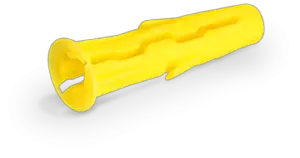 Yellow wall plugs are suitable for screws with a diameter of 3.0mm to 4.5mm and require a 5mm drill bit for installation. They can support weights of up to 5kg, making them ideal for lighter items such as picture frames or small shelves. When installing a yellow wall plug, it is important to ensure that the plug is at least the same length as the screw you’ll be using. If the wall plug is too short, it won’t be able to provide enough support for the screw, and the item may not be securely mounted to the wall.
Yellow wall plugs are suitable for screws with a diameter of 3.0mm to 4.5mm and require a 5mm drill bit for installation. They can support weights of up to 5kg, making them ideal for lighter items such as picture frames or small shelves. When installing a yellow wall plug, it is important to ensure that the plug is at least the same length as the screw you’ll be using. If the wall plug is too short, it won’t be able to provide enough support for the screw, and the item may not be securely mounted to the wall.
Red Wall Plug
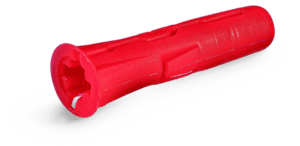 Red wall plugs require a 6mm drill bit for installation and are suitable for use with screws with a diameter of 3.5mm to 5.00mm. They can support weights of up to 15kg, making them suitable for medium-weight items such as small cabinets or bookshelves. When installing a red wall plug, make sure the plug is the same length as or longer than the screw you’ll be using. It is also important to avoid overloading the wall plug with too much weight, as this can cause it to fail and the item to fall.
Red wall plugs require a 6mm drill bit for installation and are suitable for use with screws with a diameter of 3.5mm to 5.00mm. They can support weights of up to 15kg, making them suitable for medium-weight items such as small cabinets or bookshelves. When installing a red wall plug, make sure the plug is the same length as or longer than the screw you’ll be using. It is also important to avoid overloading the wall plug with too much weight, as this can cause it to fail and the item to fall.
Brown Wall Plug
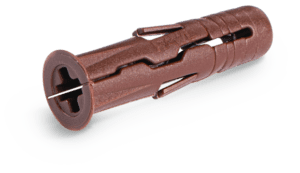 Brown wall plugs require a 7mm drill bit for installation and can support screws with a diameter of 4.0 to 6.0mm. They can support weights of up to 25kg, making them ideal for heavier items such as larger cabinets or heavy shelves. When installing a brown wall plug, it is important to use the appropriate size drill bit to ensure that the plug is securely anchored in the wall. Additionally, make sure the plug is at least the same length as the screw you’ll be using to ensure that the item is securely mounted.
Brown wall plugs require a 7mm drill bit for installation and can support screws with a diameter of 4.0 to 6.0mm. They can support weights of up to 25kg, making them ideal for heavier items such as larger cabinets or heavy shelves. When installing a brown wall plug, it is important to use the appropriate size drill bit to ensure that the plug is securely anchored in the wall. Additionally, make sure the plug is at least the same length as the screw you’ll be using to ensure that the item is securely mounted.
Blue Wall Plug
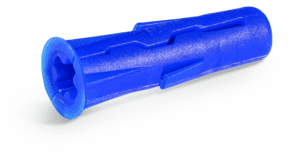 Blue wall plugs require an 8mm drill bit for installation. They are suitable for use with screws with a diameter of 4.5mm to 6.0mm and can support weights of up to 35kg. Blue wall plugs are ideal for mounting larger items such as cabinets or heavy shelving. When installing a blue wall plug, be sure to use a drill bit that is the appropriate size to ensure that the plug is securely anchored in the wall. Additionally, make sure the plug is at least the same length as the screw you’ll be using to ensure that the item is securely mounted.
Blue wall plugs require an 8mm drill bit for installation. They are suitable for use with screws with a diameter of 4.5mm to 6.0mm and can support weights of up to 35kg. Blue wall plugs are ideal for mounting larger items such as cabinets or heavy shelving. When installing a blue wall plug, be sure to use a drill bit that is the appropriate size to ensure that the plug is securely anchored in the wall. Additionally, make sure the plug is at least the same length as the screw you’ll be using to ensure that the item is securely mounted.
Grey Wall Plug
Grey wall plugs require a 10mm drill bit for installation and use screws with a diameter of 5.0mm to 8.0mm. They can support weights of up to 45kg. Grey wall plugs are ideal for mounting very heavy items such as large cabinets or heavy duty shelving. When installing a grey wall plug, be sure to use a drill bit that is the appropriate size to ensure that the plug is securely anchored in the wall. Additionally, make sure the plug is at least the same length as the screw you’ll be using to ensure that the item is securely mounted.
Choosing the Right Size Wall Plug
To choose the right size wall plug, you need to know the diameter of the screw you’ll be using. Once you know the screw size, you can select the appropriate wall plug colour. It’s important to use a wall plug that is the same length as or longer than the screw you’ll be using. If the wall plug is too short, it won’t be able to provide enough support for the screw.
How Much Weight Your Wall Plug Can Hold?
The amount of weight a wall plug can hold depends on its size and the material it is made from, also the fixture you are using. As mentioned earlier, yellow wall plugs can hold up to 5kg, red wall plugs up to 15kg, brown wall plugs up to 25kg, blue wall plugs up to 35kg, and grey wall plugs up to 45kg.
Wall plugs made from nylon or zinc-coated metal can hold more weight than plastic wall plugs. For example, a nylon wall plug can hold up to 75 pounds. However, even with a strong wall plug, you should still be careful not to overload it with too much weight. If you are unsure about how much weight a wall plug can hold, it is best to err on the side of caution and choose a more heavy-duty option.
Other Wall Fasteners
If you need to hang items that are heavier than what a standard plastic wall plug can support, there are other options available.
Threaded drywall anchors are suitable for use without a pilot hole and can hold between 25-75 pounds, depending on their size. They come in nylon or zinc-coated metal options. Molly bolts are suitable for lighter loads and allow for screws to be removed and reinserted into the wall. They can hold between 25-55 pounds, depending on their size. Lastly, toggle bolts can hold the most weight, with metal ones holding up to 100 pounds, and plastic ones holding up to 20 pounds. Toggle bolts are the hardest to install, requiring a hole that is three times the diameter of the bolt. They are best used for heavier items that need to be hung from the ceiling, but this is not recommended as the ceiling drywall can break. It’s essential to use the appropriate wall fastener for the weight of the item you are mounting and to ensure that the fastener is installed correctly.
Unknown Wall Plug Sizes
If you come across a wall plug with an unknown size, there is a simple way to determine the correct drill bit size needed. Start by getting a piece of cardboard and selecting a drill bit that you think is approximately the size of the wall plug. Drill a hole into the cardboard, being careful not to move the drill sideways and widen the hole larger than the bit. See how well your plug fits in the hole. If the hole is not big enough for the plug to fit in, try drilling a new hole with a larger drill bit. If the hole is too large, the wall plug will fit in easily, but the teeth won’t catch on the hole as you insert it. Try drilling a new hole with a smaller drill bit. When the wall plug fits in the hole, with the plug’s teeth catching on the hole as you insert it, then you’ve selected the right size drill bit. Use this drill bit in the wall when you widen the pilot hole to drill a hole of the appropriate size for the plug.
Some additional tips
- Make sure the wall plug is the same length or longer than the screw you will be using.
- Clean the hole before inserting the wall plug.
- Tap the wall plug into the hole with a hammer.
- Insert the screw into the wall plug.
- Do not overtighten the screw.
- If you are unsure about the weight capacity of a particular wall plug or fastener, it’s always best to choose a more heavy-duty option to ensure the safety of your mount.
Click Here To Shop for Wall Plugs On Amazon
Yellow Rawlplug Red Rawlplug Brown Rawlplug Blue Rawlplug Grey Rawlplug
Sources:
https://www.wikihow.com/Use-a-Rawlplug
https://www.youtube.com/watch?v=29Eq96c1dOc
https://www.diydoctor.org.uk/projects/fixing-to-masonry.htm
https://www.bobvila.com/articles/best-drywall-anchors/
- Drill Battery Maintenance: Essential Tips for Cordless Drill Battery Care - February 5, 2024
- Troubleshooting Drill Issues - February 5, 2024
- Quick Drilling Techniques - February 2, 2024


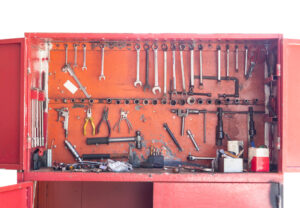

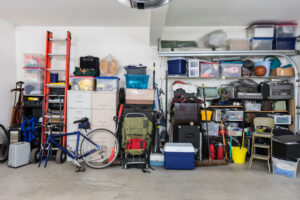


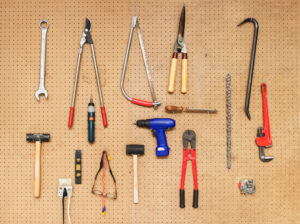
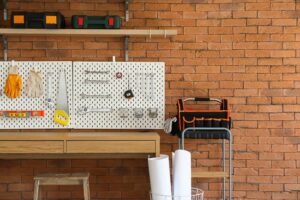

I found the information from your site to be most helpful. Thank you for taking the time to compile this information in a simple to follow fashion.